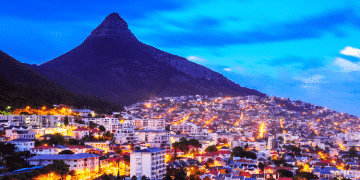Top 6 South African Dollar Billionaires: How Their Fortunes Soared in 2024
Introduction to South Africa’s Billionaire Landscape
Overview of Forbes’ Real-Time Billionaire list tracking methodology
The Real-Time Billionaire list by Forbes is an ever-evolving snapshot of the world’s wealthiest individuals.
How does Forbes compile this list? By meticulously tracking and validating various types of assets including private businesses, real estate holdings, and even unique artwork.
When comprehensive documentation isn’t available, Forbes discounts the value of these assets, ensuring their estimates remain conservative yet realistic.
To make it onto this prestigious list, an individual or family must boast a net worth exceeding $1 billion (or approximately R19 billion).
Significant wealth growth trend among all six South African dollar billionaires in 2024
2024 marked a banner year for South Africa’s six recognized dollar billionaires, each witnessing substantial growth in their net worth.
Johann Rupert, Nicky Oppenheimer, Michiel Le Roux, Koos Bekker, Patrice Motsepe, and Christo Wiese each saw their fortunes swell.
- 🪙Johann Rupert’s wealth climbed from $10.3 billion to $11.4 billion.
- 🪙Nicky Oppenheimer’s holdings surged from $8.3 billion to $9.5 billion.
- 🪙Michiel Le Roux’s impressive gains saw him rise from $1.1 billion to $1.7 billion.
- 🪙Koos Bekker and Patrice Motsepe each saw increases, with Bekker at $2.8 billion and Motsepe at $2.7 billion.
- 🪙Meanwhile, Christo Wiese boosted his net worth from $1 billion to $1.6 billion.
Forbes’ comprehensive approach to estimating billionaire wealth through various assets
Forbes’ methodology in gauging billionaire wealth is both rigorous and varied.
Assessments encompass a broad spectrum of assets:
- 🪙Private Companies: The ownership stakes in these firms often constitute a large portion of a billionaire’s stock.
- 🪙Real Estate Holdings: Properties ranging from residential estates to commercial realty add significant value.
- 🪙Art and Other Collectibles: Unique assets like rare artworks can significantly contribute to net worth.
By adopting this comprehensive approach, Forbes not only provides a clear snapshot of current fortunes but also captures the diverse portfolios that underpin billionaire wealth.
Understanding these principles offers valuable insight into the financial landscape and economic dynamics shaping South Africa’s elite.
Transitioning from this overview of how South Africa’s billionaires have grown richer through various assets, we will soon delve into the profiles of these individuals, starting with the wealthiest of them all.
Johann Rupert: Leading South Africa’s Wealthy Elite
Climbing to the Top
As of 2024, Johann Rupert is firmly established as South Africa’s wealthiest individual, boasting a net worth of $11.4 billion, up from $10.3 billion at the start of the year.
This significant increase is indicative of not only the growth of his assets but also his sharp business acumen and strategic positioning in various lucrative sectors.

The Luxury Goods Magnate
Rupert’s vast fortune has been greatly expanded through his role as a luxury goods magnate.
His influence spans across several high-end brands, strengthening his financial standing.
He is the chairman of Remgro, a prominent investment holding company in South Africa, which plays a critical role in diversifying his investment portfolio.
These luxury goods holdings and other diversified investments have been fundamental in driving his net worth.
Strategic Investments and Wealth Growth
Johann Rupert’s business activities encompass various sectors, including private companies, real estate, and art investments.
Remgro holds interests in numerous industries such as banking, healthcare, and food production, which continually contribute to Rupert’s financial upward trajectory.
Despite market fluctuations, his capacity to leverage and scale his assets underpins his steady climb on the Forbes Real-Time Billionaire list.
Looking Ahead
Johann Rupert’s case articulates the significant wealth creation potential within South Africa, and his achievements offer a glimpse into the broader opportunities in the region.
Though the competition on a global scale remains fierce, Rupert’s strategic investments ensure that he remains a notable figure in the international billionaire landscape.
The Oppenheimer Legacy
Nicky Oppenheimer and his family’s wealth has seen significant growth over 2024, from $8.3 billion at the start of the year to $9.5 billion.
This impressive leap in net worth is attributed to their stronghold in the diamond and mining industry.
As the second-highest ranked South African billionaire, Oppenheimer’s influence and financial success speak volumes about the intricate dynamics of diamond trading and mining.
Diamond and Mining Industry Influence
The Oppenheimer family’s fortune is deeply rooted in the diamond sector, a legacy that spans generations.
They famously led the De Beers Group, a diamond company that revolutionized the industry with its innovative marketing campaigns and supply chain control.
Even after selling their 40% stake in De Beers to Anglo American in 2012, the family’s wealth continues to swell, thanks in part to wise investments and diversified interests in mining operations.
Wealth Growth Context
Ranked just below Johann Rupert, Nicky Oppenheimer embodies the storied legacy and continued relevance of South Africa’s diamond and mining sector.
His fortune is a testament to the enduring profitability of these industries, which have weathered economic fluctuations globally.
The Oppenheimer family’s ability to maintain and grow their wealth reflects strategic planning and a deep understanding of market dynamics.
A Shift in South Africa’s Billionaire Landscape
The steady increase in Oppenheimer’s wealth is a crucial indicator of broader economic trends in South Africa.
It highlights the viability of traditional sectors like mining while also suggesting potential for growth in other areas.
This wealth increase may signal positive economic outlooks for the country, driven by key players who continue to shape and influence industries.
This chapter on South Africa’s second-richest individual leads into a discussion of other prominent financial leaders making waves on the billionaire list.
Rising Financial Leaders
Koos Bekker’s Wealth Surge
Koos Bekker, the chair of Naspers, witnessed a commendable rise in his net worth in 2024.
His fortune increased from $2.4 billion at the start of the year to $2.8 billion.
Naspers, a global consumer internet group, has played a pivotal role in broadcasting, e-commerce, and social networking services.
Bekker’s strategic innovation and adept leadership have propelled Naspers, contributing significantly to his wealth increase.
These accomplishments underscore his stature as a key player in South Africa’s economic landscape.
Patrice Motsepe’s Continual Growth
Patrice Motsepe, a prominent business magnate in South Africa, also enjoyed a substantial rise in his net worth, from $2.4 billion to $2.7 billion in 2024.
As the founder and chairman of African Rainbow Minerals, his investments span across gold, ferrous metals, base metals, and platinum.
Motsepe’s diversified portfolio and his continued success in the mining sector highlight his ability to navigate various market conditions, further solidifying his financial standing.
Michiel Le Roux’s Impressive Ascend
Michiel Le Roux, the founder of Capitec Bank, experienced the most notable percentage increase among the rising financial leaders.
His net worth surged from $1.1 billion to $1.7 billion in 2024.
Le Roux’s vision in transforming Capitec into one of South Africa’s leading retail banks has paid off handsomely.
His strategic insight and the bank’s customer-centric approach have contributed to this impressive leap in his wealth.
These rising financial leaders exemplify the dynamic nature of wealth accumulation in South Africa.
The year 2024 has seen remarkable gains for Bekker, Motsepe, and Le Roux, highlighting their significant roles within the country’s economic framework and their impact extending beyond borders.
Wealth Distribution and Global Context
Comparing South African and Global Billionaires
When it comes to wealth, South Africa’s billionaires have seen remarkable growth in 2024.
Their significant strides, however, are put into sharp contrast when measured against global titans like Elon Musk.
For example, Musk’s staggering net worth of $416 billion is 14 times greater than the combined net worth of all six South African billionaires.
Collective Wealth vs. Global Leaders
South Africa’s top six dollar billionaires have collectively amassed impressive wealth.
Individually though, Johann Rupert, the wealthiest among them, stands at $11.4 billion.
While substantial, this pales compared to global tech magnates.
Here’s a snapshot:
- 🪙Johann Rupert: $11.4 billion
- 🪙Nicky Oppenheimer & Family: $9.5 billion
- 🪙Koos Bekker: $2.8 billion
- 🪙Patrice Motsepe: $2.7 billion
- 🪙Michiel Le Roux: $1.7 billion
- 🪙Christo Wiese: $1.6 billion
Even cumulatively, their combined net worth underscores their influence within South Africa, but it highlights their economic footprint as modest on the global scale.
South African Wealth in a Global Context
On the international stage, the presence of South African billionaires portrays both prosperity and limitations.
Their achievements are a testament to South Africa’s economic opportunities but also reflect the vast disparities in wealth distribution at a global level.
Despite impressive gains, these billionaires illustrate the broader dynamics at play within the national economy and the potential for future growth.
Overall, understanding the wealth of South Africa’s elite within the context of global rankings provides insights into broader economic trends, both locally and internationally.
Impact and Future Outlook
Implications of Consistent Wealth Growth
The remarkable increase in wealth among South Africa’s top six billionaires in 2024 highlights significant economic trends within the country.
For instance, Johann Rupert, whose net worth grew from $10.3 billion to $11.4 billion, serves as a prominent example of robust strategic investments.
Such consistent wealth growth implies a stable and potentially expanding luxury goods market, as well as a positive performance in the investment holding sector.
The growth in Nicky Oppenheimer and his family’s wealth from $8.3 billion to $9.5 billion suggests ongoing strength and resilience in South Africa’s diamond and mining industries.
These sectors have historically been cornerstones of the country’s economy, and the Oppenheimer family’s sustained success reinforces their pivotal role.
Potential Economic Indicators for South Africa
The upward trajectory of billionaire net worths may point to broader economic health and growth in South Africa.
It reflects increased valuations of local companies, real estate, and other assets.
It may also indicate favorable market conditions and investor confidence.
Additionally, the wealth increase of figures like Koos Bekker and Patrice Motsepe suggests strong performances in the media, technology, and mining sectors, which are critical areas of the South African economy.
Role of Billionaires in South Africa’s Economic Landscape
These billionaires play crucial roles in the national economy beyond their personal wealth.
Their investments create jobs, stimulate industry growth, and contribute to the national GDP.
For instance:
These financial leaders are not only pillars of the South African economy but also key players on the global stage, reflecting the interconnected nature of modern economies.
This wealth growth underscores the potential for further economic expansion and development within South Africa, emphasizing the importance of strategic investments and industry diversification.





